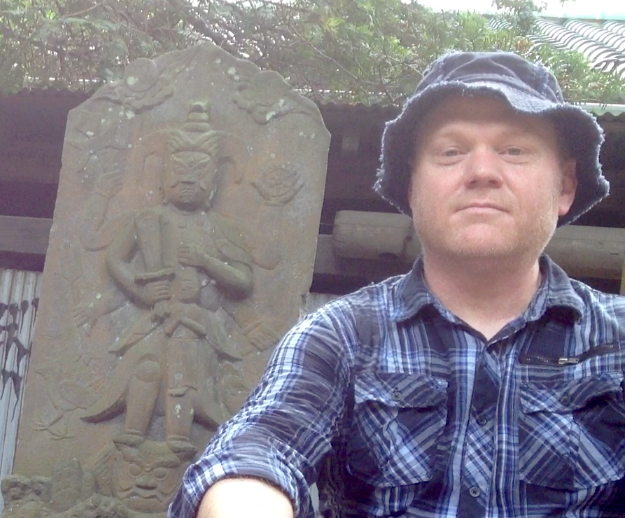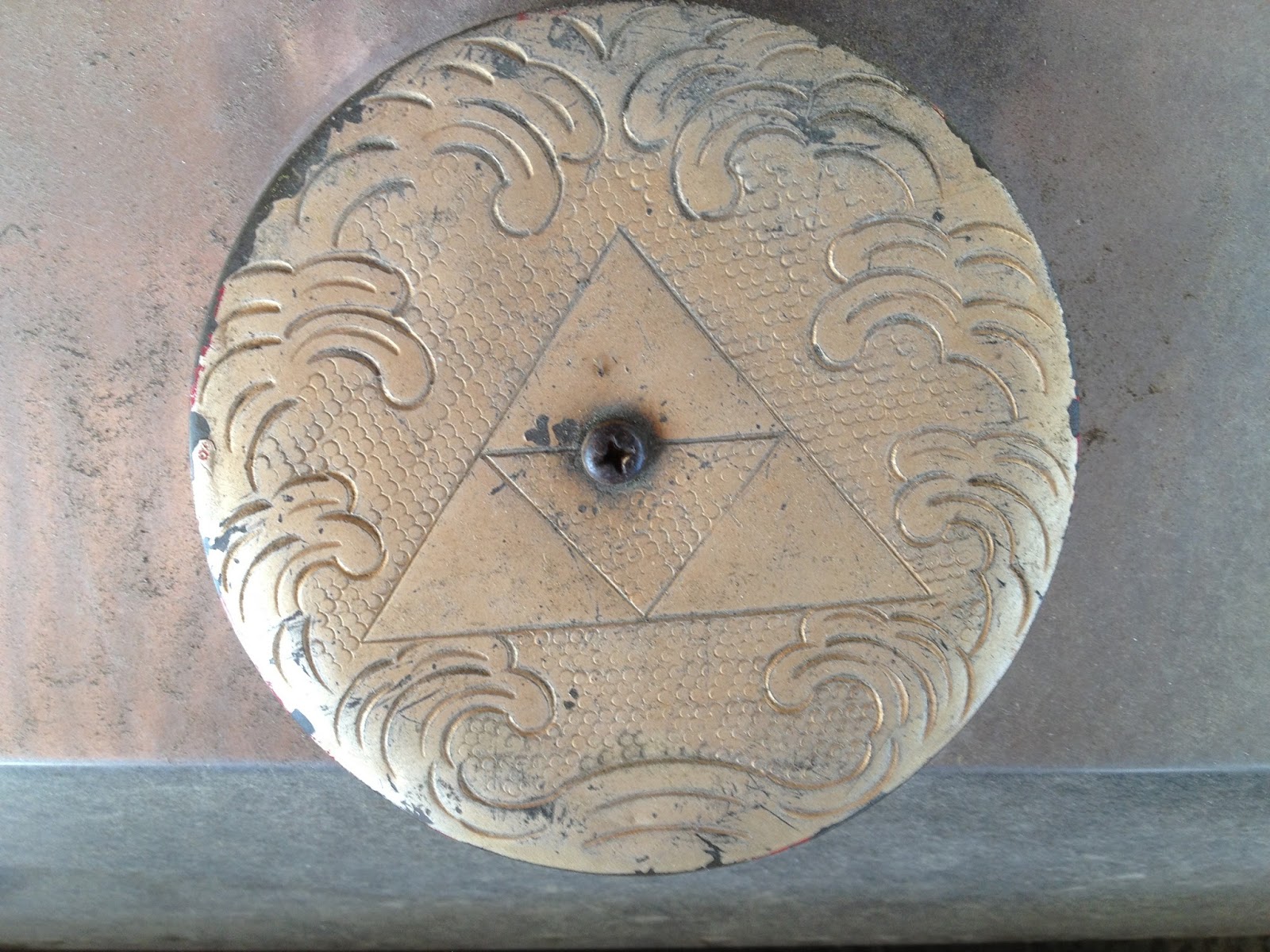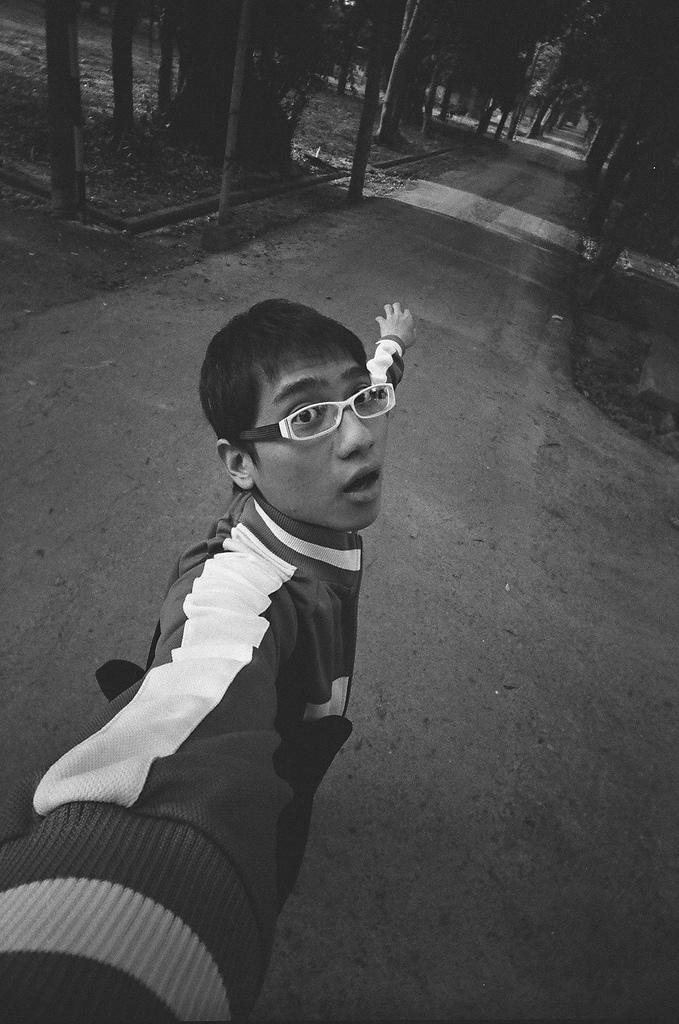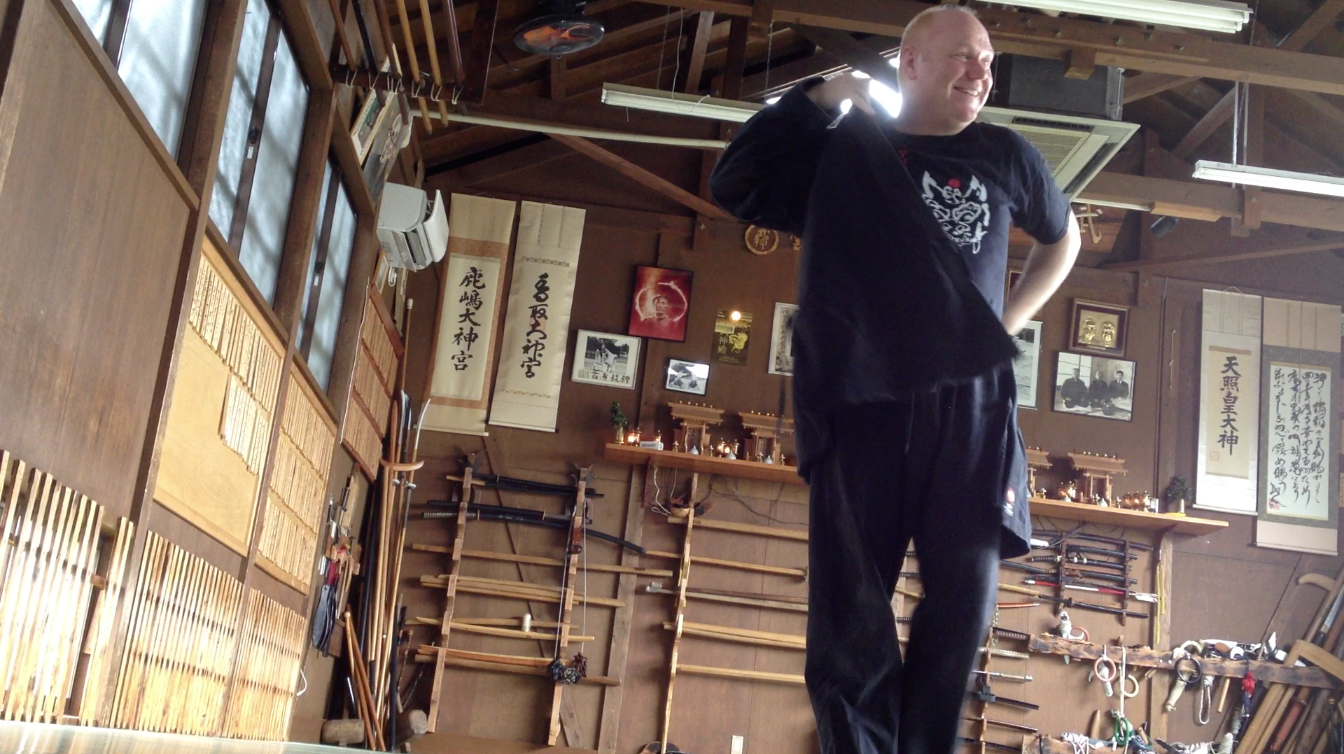From Bujinkan Santa Monica by Michael
A man lost his head. Not his mind, but his HEAD. Some say he brought it on himself, some just accept that it was the code of the warrior, a result of Bushido. But he wasn't the only one to die in the Akō Vendetta incident. More than 60 warriors died just to take this one man's head.
Here I stood lost on a Tokyo street corner. My source had left me with a murky glint in his eye and a hand-drawn map to the scene of the crime. Of course I had to go there.
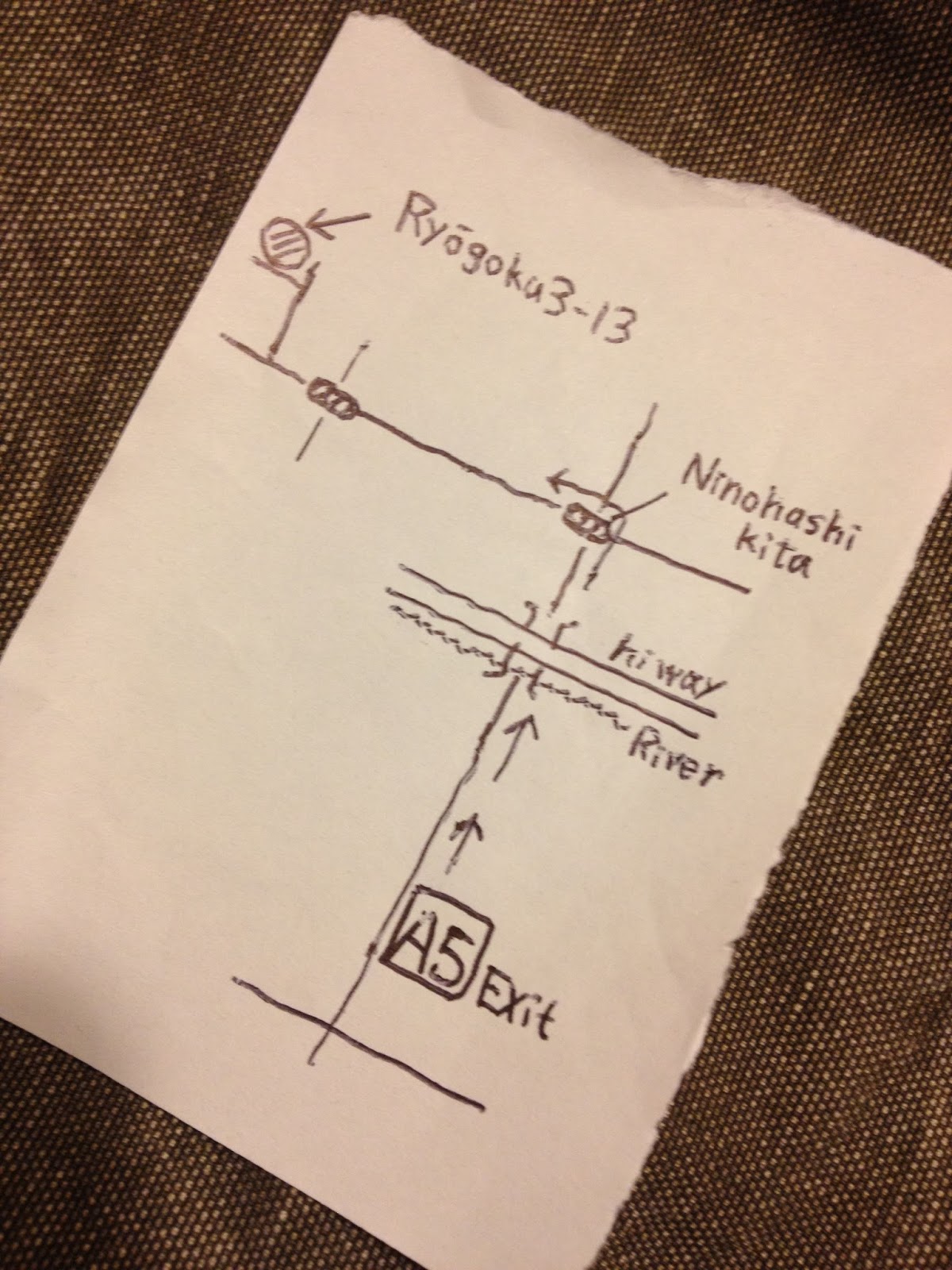 |
| Map to Lord Kira's Residence |
Going there meant feeling the silence of a 310 year old crime scene. You see the Akō incident happened in 1703 during the 元禄 Genroku era in Japan. It is also known as the story of the 47 Ronin.
This story speaks to the very soul of Japan and pairs the code of Bushido with the drama of a great tragedy. It has been told and retold to the point that it has become legend. But facts are facts, and I wanted to see for myself.
First I had to figure out where this sketchy map was taking me. It said to cross a river, but I saw no river. I asked some random people and they seemed as confused as I was. So I just started walking and the bridge on the map appeared in front of me like some kind of impressionist anime.
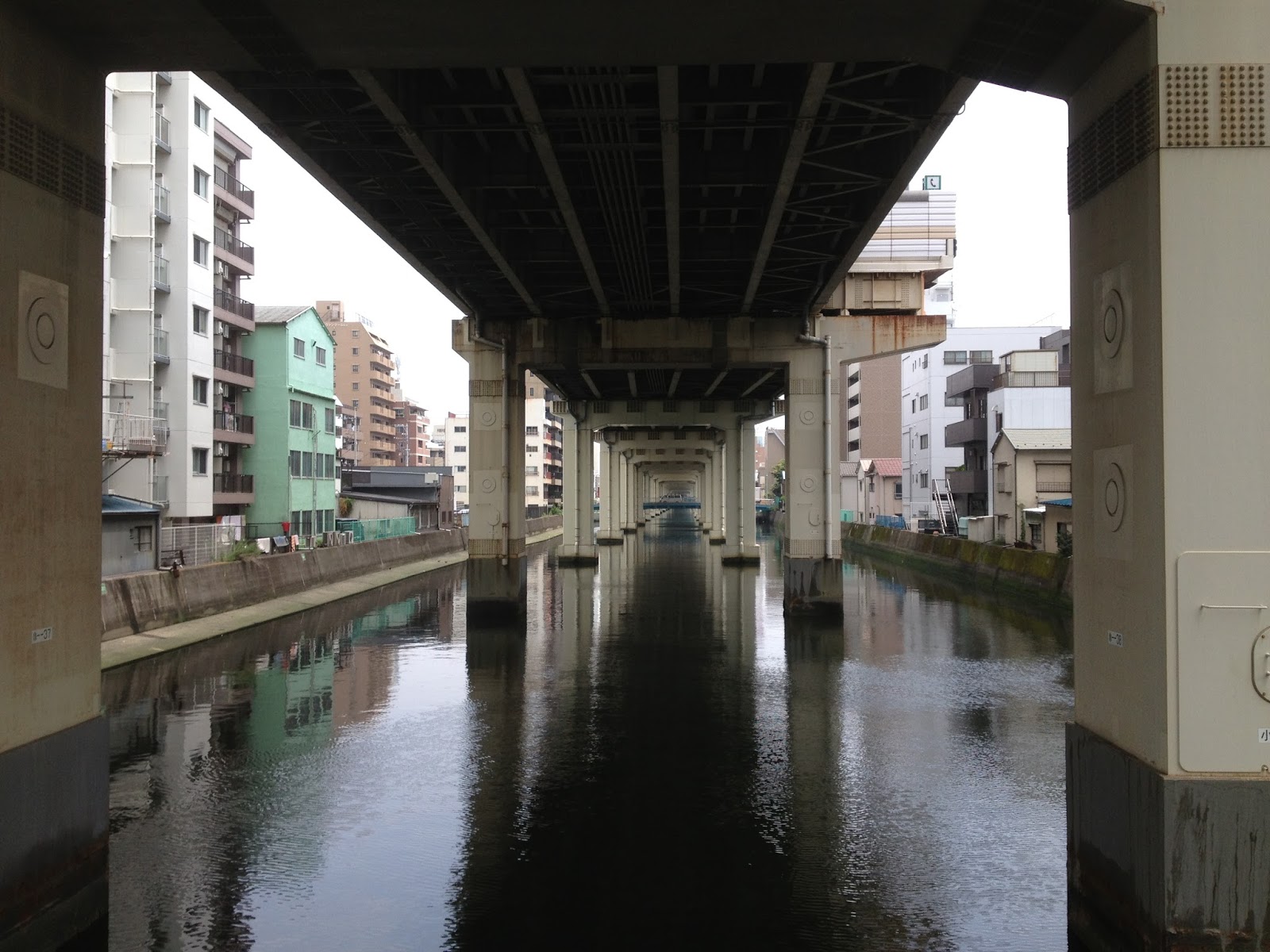 |
| Komatsugawa near Ryōgoku |
Lord Kira is most often portrayed as a greedy and arrogant man. But the locals in his neighborhood seem strangely loyal to one of their own.
The 47 men became Ronin when their master was sentenced to commit 切腹 Seppuku (ritual suicide) after he attacked Kira for being an arrogant bastard. You see a Samurai is nobody without a master. In fact, you were not allowed the duties or granted the honors of the Samurai class without your lord. So a masterless Samurai became Ronin, wandering the country in search of work and to impossibly recapture some honor.
After their master died, everyone thought they would seek revenge as good Samurai should. Lord Kira's father in law sent reinforcements to guard over his palace. He was heavily protected, and revenge, while honorable, would be unlikely to succeed.
So the leader of the Ronin, Ōishi Kuranosuke, hatched a very Ninja like plan. They would all disperse. He himself went to Kyoto and started whoring around and drinking heavily. The other men took odd jobs as craftsmen and merchants.
Lord Kira had spies watching these Ronin. The spies reported that Ōishi was a dishonorable drunk in far away Kyoto. Of course, he was plotting and this was all hensojutsu and kyojitsu. All this to throw off the spies of Kira. So single minded was his thought of revenge, that he drove away his wife and children to focus on the scheme.
Meanwhile the other Ronin in their disguises gained access to the layout of the estate and were spying on Kira's palace. They spent their free time preparing weapons and making their own armor, since buying any would give away their plan.
Two years went by. Believing that Ōishi was nothing but a dishonorable drunk, Kira began to relax his guard. He sent some of his father in law's retainers home.
The time for revenge was at hand.
As I walked through Ryogoku, this neighborhood seemed so peaceful for such violent legend. I followed my map, not expecting to find much. I certainly did not expect to see what I saw when I got there.
One piece of evidence from this event captured my mind. Here I was from 310 years later and from 6000 miles across the world... from a different language, race and culture. What would I find?
 |
| Old House in Ryōgoku |
I wandered along the side streets of this Tokyo neighborhood. I saw no castles, or battle flags. Heard no horses… It looked like any neighborhood you might stumble through on your way to a late night train station rendezvous.
I saw some houses that were touched by history. Not a graceful history, but the slow creep of time. Then I was lucky to spot a small plaque.
It was posted casually and forgotten in front of a modern apartment building. Centuries ago, a battle raged at this very spot.
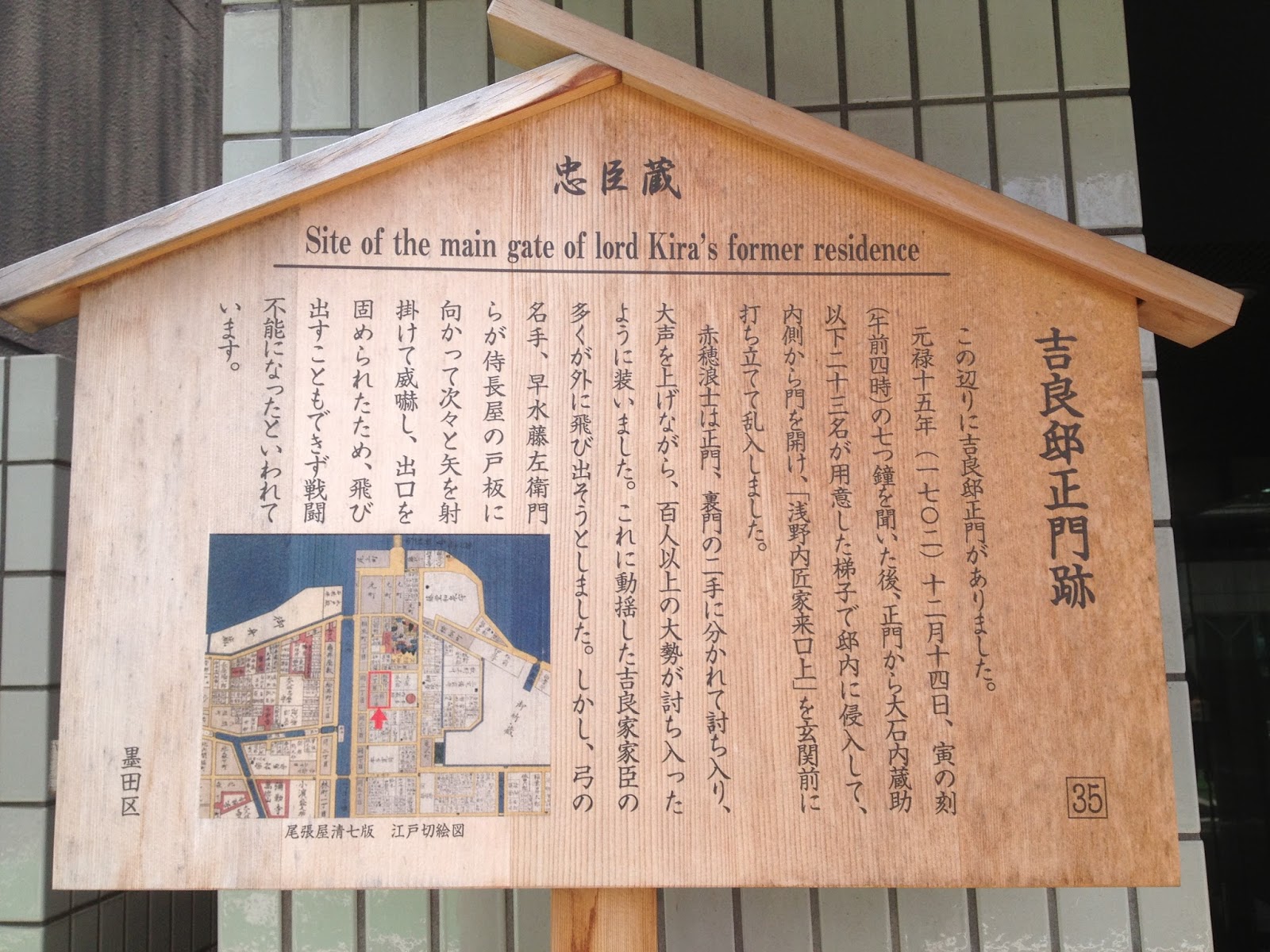 |
| Site of Lord Kira's Residence, Ryōgoku |
OK, I found the spot. What was left? I turned a corner and found the address on my map.
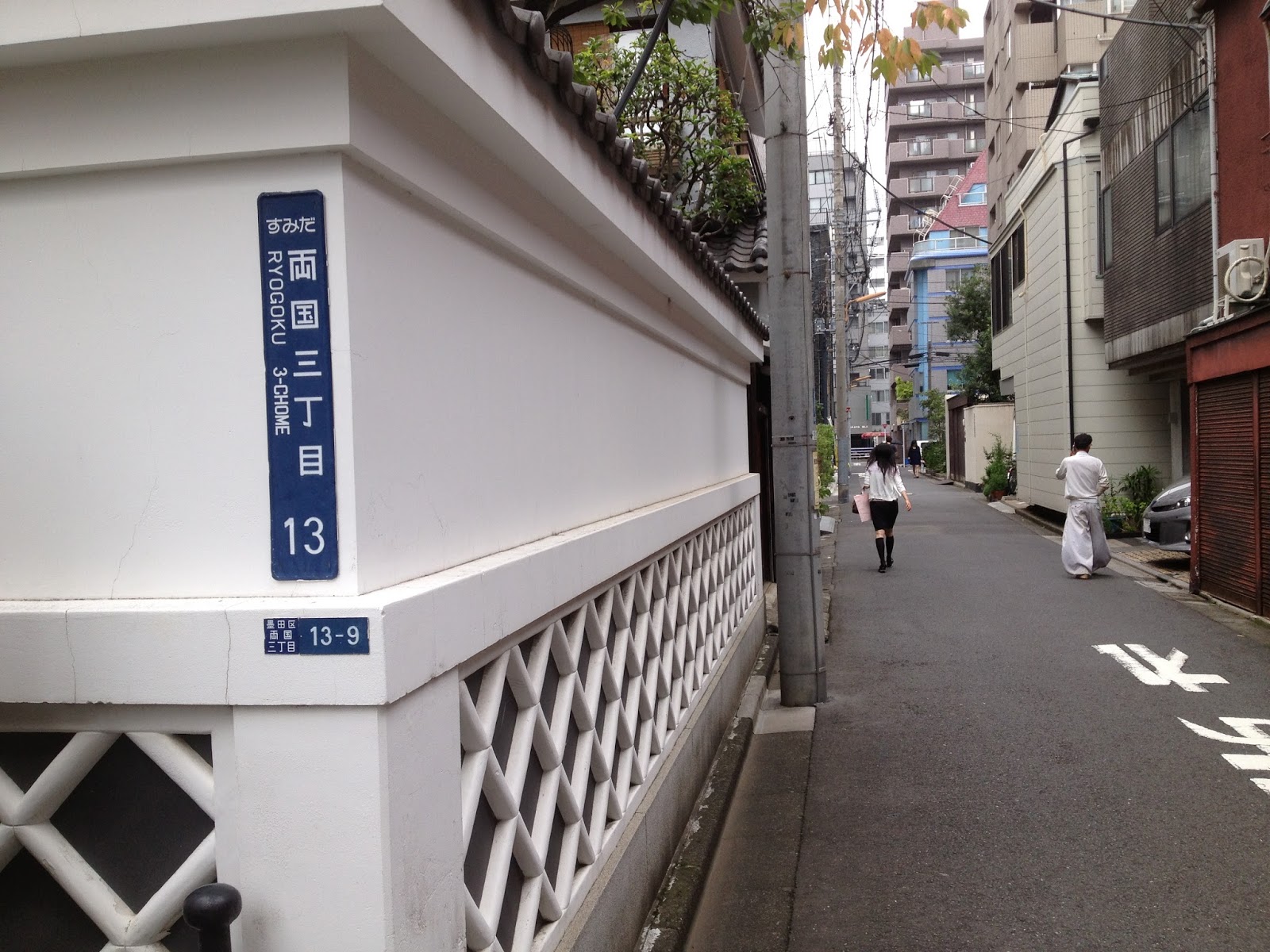 |
| Lord Kira's modern address, Ryōgoku |
There isn't much left of the former palace. But this courtyard where the man was beheaded is well cared for, even as it stands on pause. Like a gap in time as the city moves forward around it.
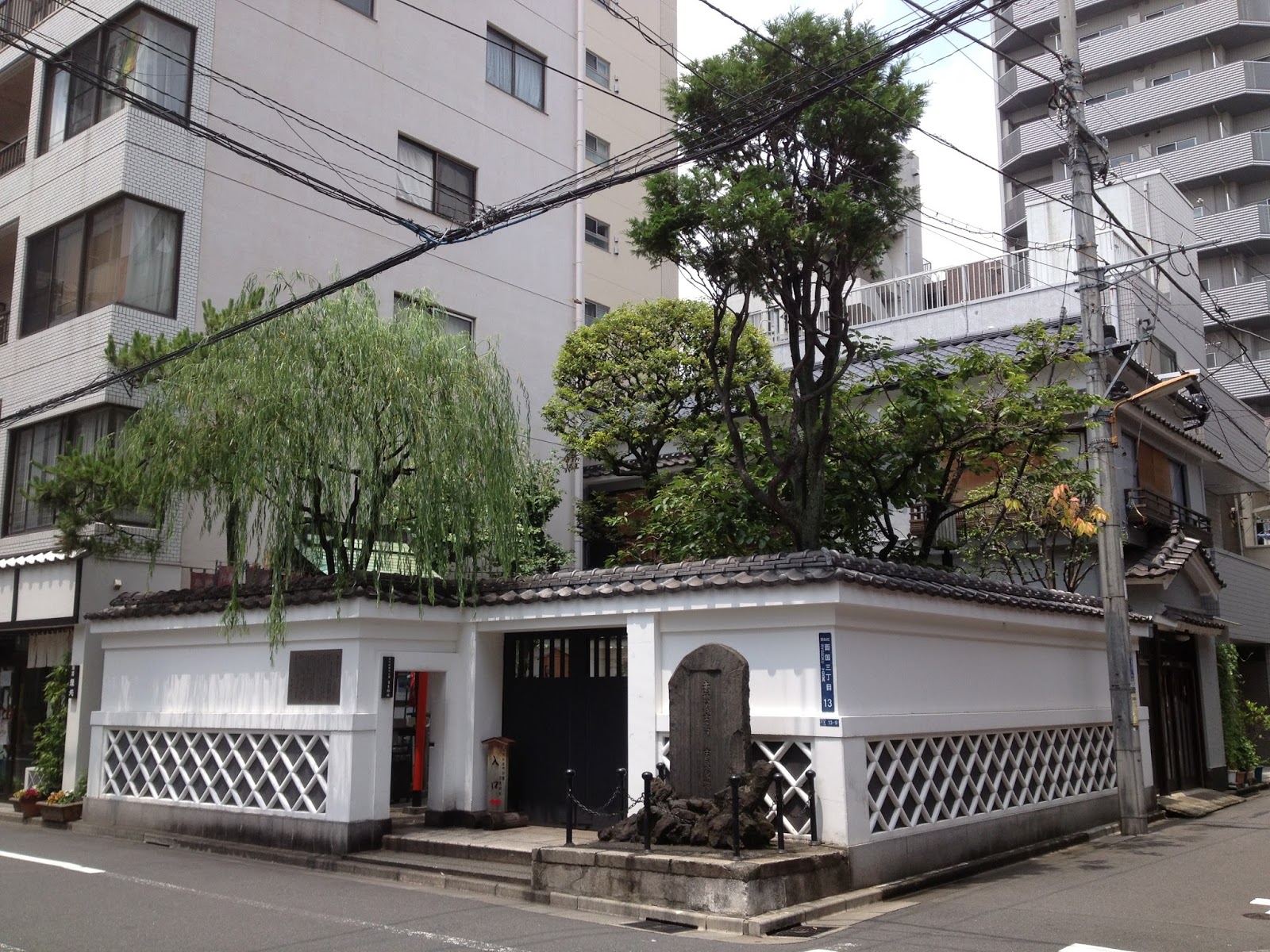 |
| Lord Kira's courtyard, Ryōgoku |
Ōishi evaded the spies and stole away from Kyoto. During the hushed snowfall of a cold winter night, they gathered in secret. 47 Ronin, made up of withered old warriors in their seventies, seasoned retainers, and even a few wide eyed teenage boys. Here was the plan:
One group was to attack the front gate. The other, led by his son, would attack the rear with 23 men. They would use the beat of a drum to coordinate their attack. Some of the men scaled the fortified walls with ropes as the cold wind scraped their hands and drove snow into their eyes.
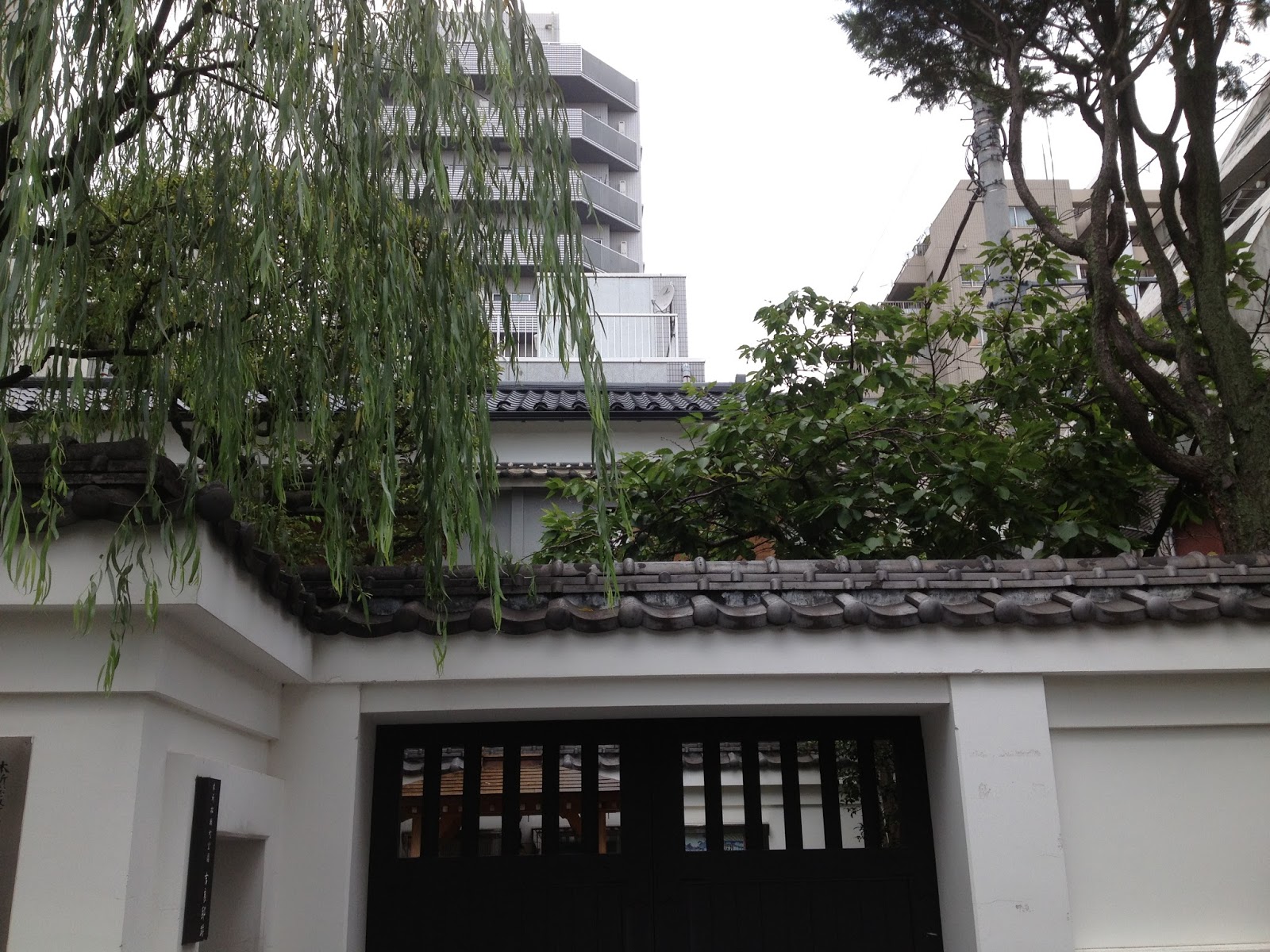 |
| Lord Kira's gate, Ryōgoku |
A few others snuck into the gatekeeper's house for the keys. More men stationed themselves in the four corners of the roof as archers to fire upon anyone who tried to run for help.
Ōishi signaled with the drumbeat. An epic battle ensued in which Kira's retainers bravely fought off the intruders. Meanwhile, Kira hid with the women in a closet on the veranda.
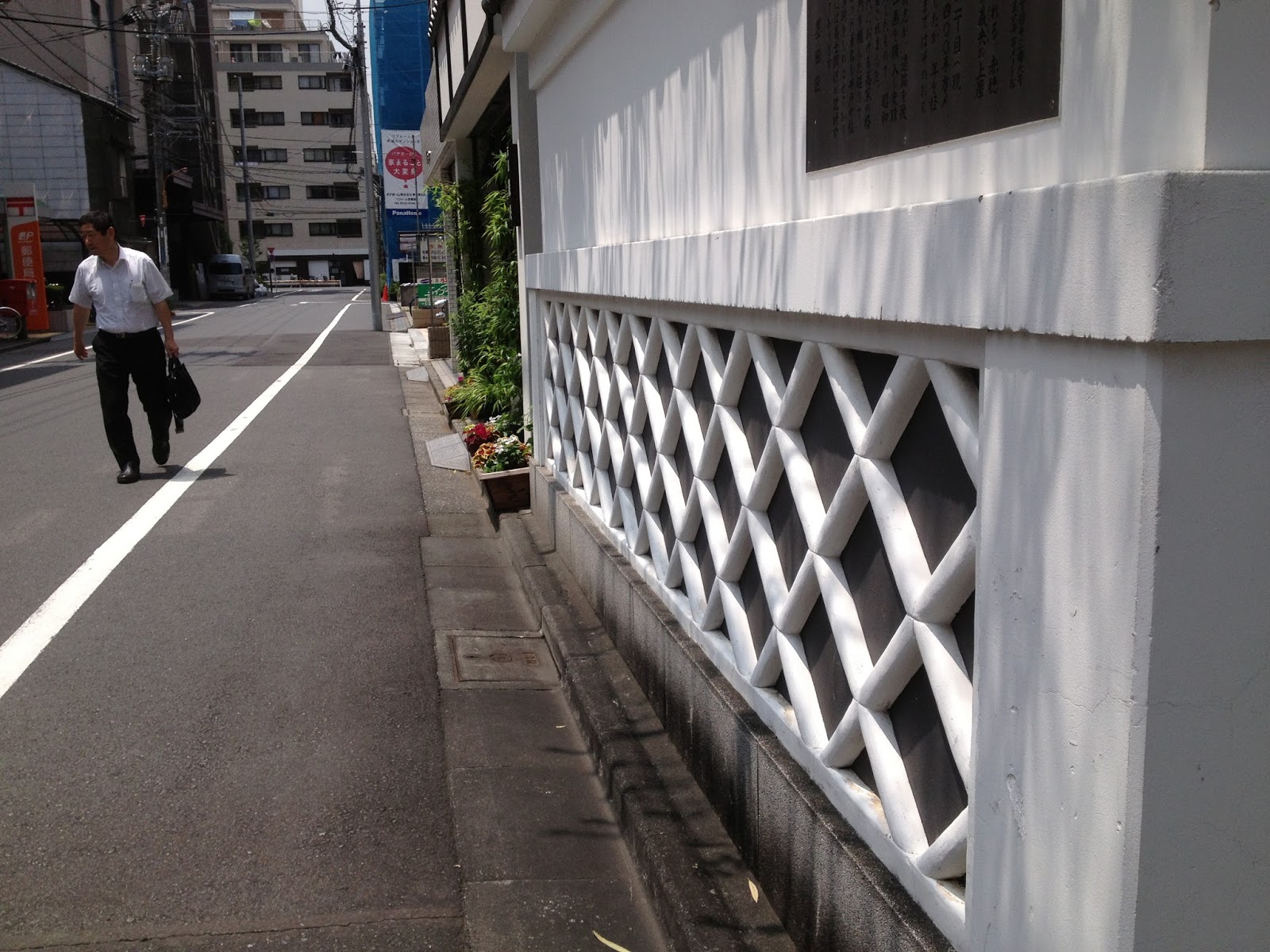 |
| Lord Kira's walls are fortified, Ryōgoku |
I didn't want to use my Ninja abilities to scale the walls in the middle of the day.
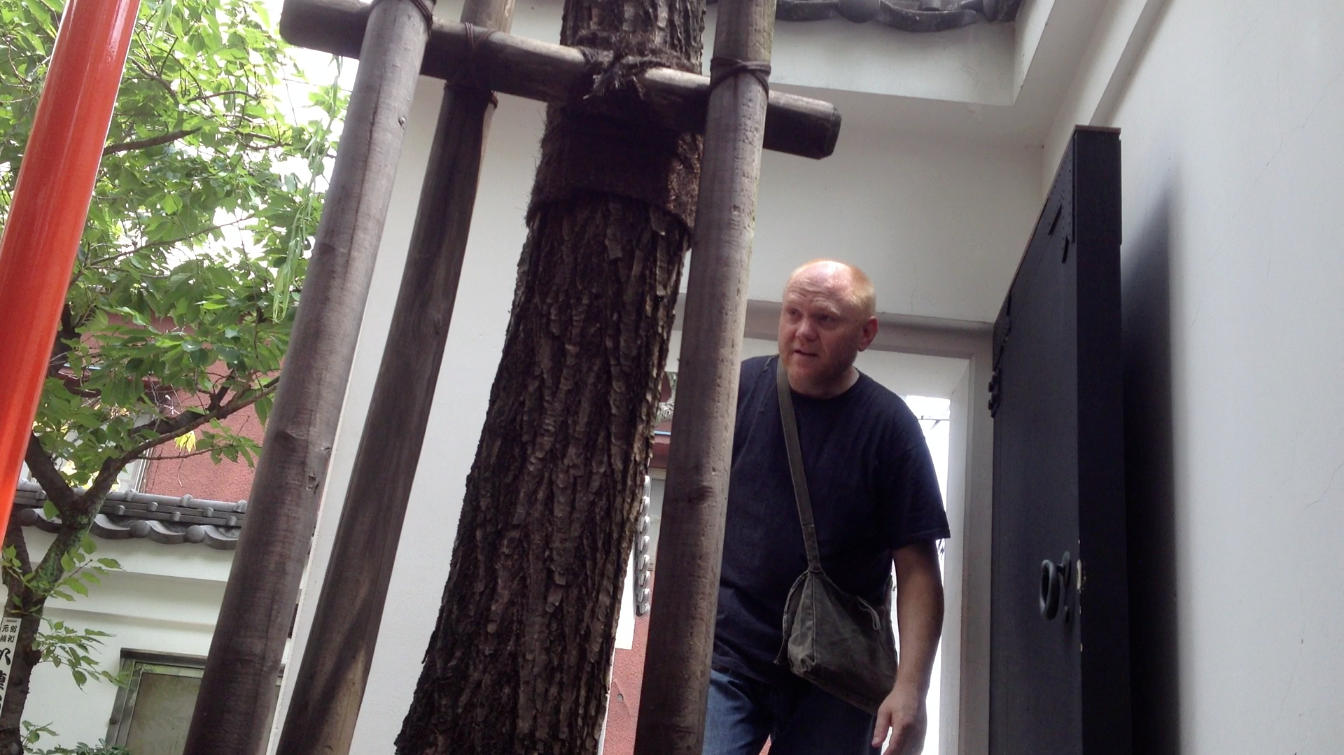 |
| Michael Glenn in Lord Kira's Doorway |
I was lucky that the side gate was open.
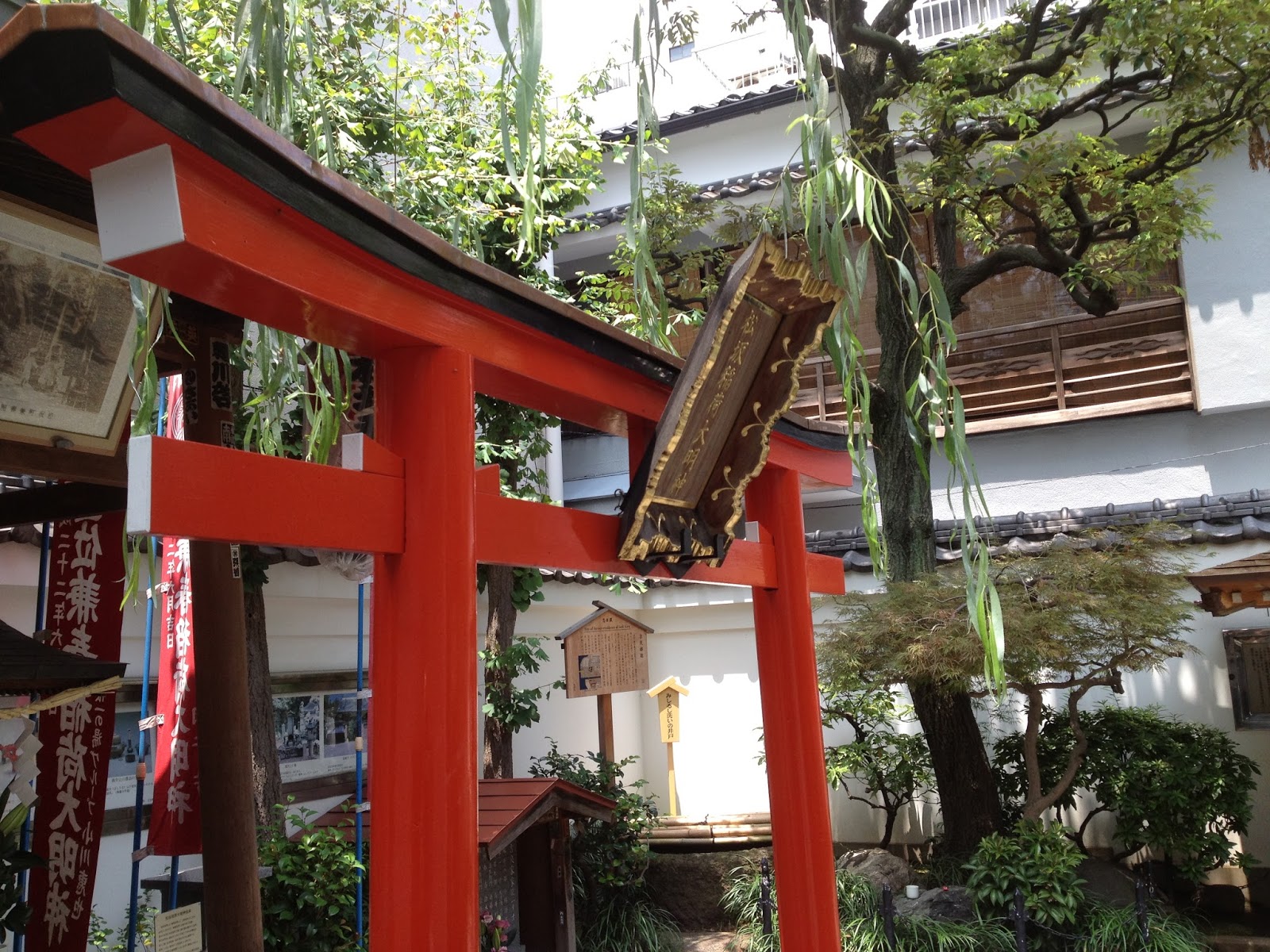 |
| Shrine for Lord Kira and the 47 Ronin, Ryōgoku |
In the courtyard was a small shrine.
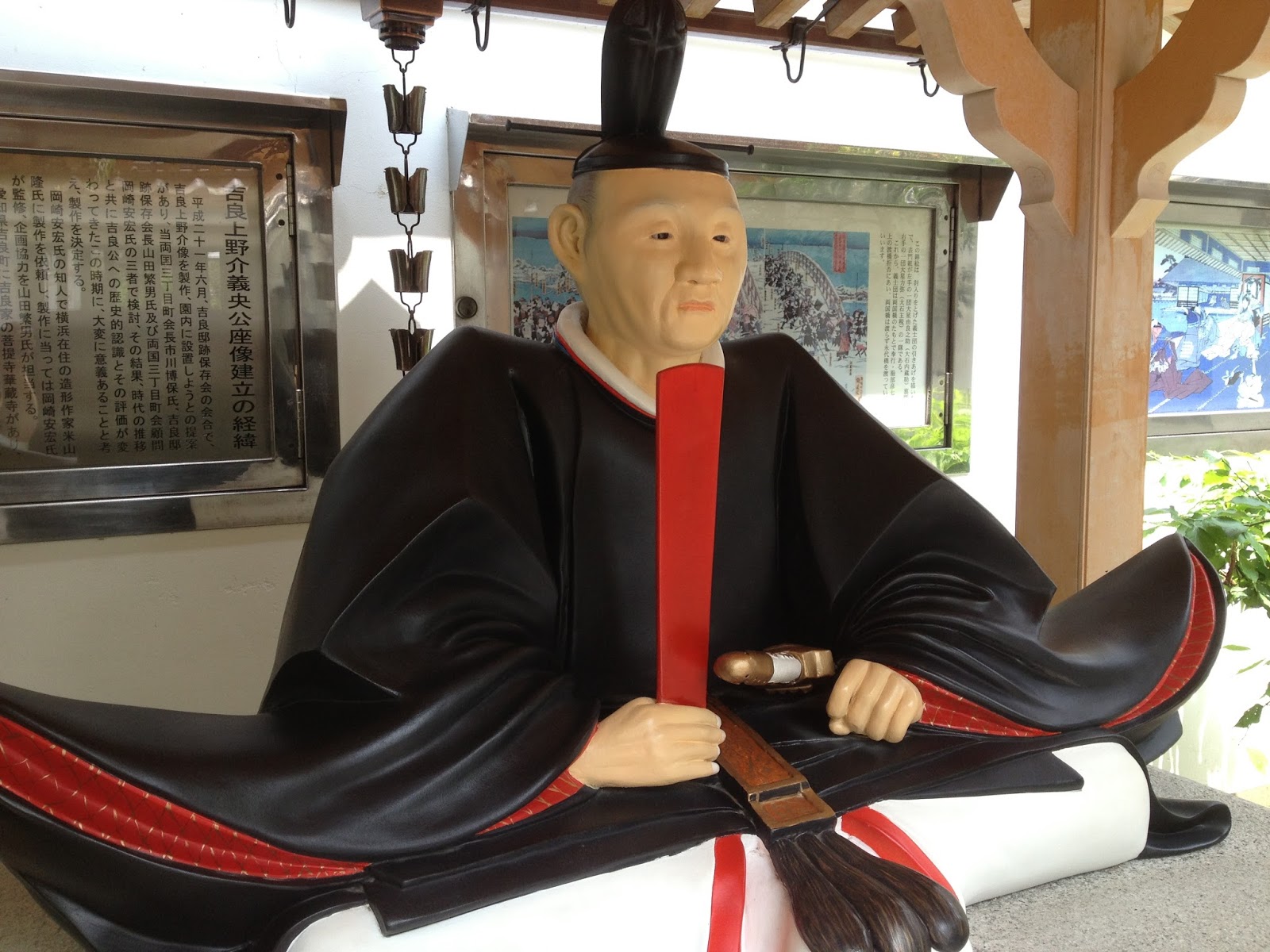 |
| Lord Kira Yoshinaka, Kōzuke no suke |
And next to the shrine is a statue of the villain or victim of this story, depending on your perspective, Lord Kira Yoshinaka, Kōzuke no suke.
The signal of the whistle pierced the cold night. Kira was dead.
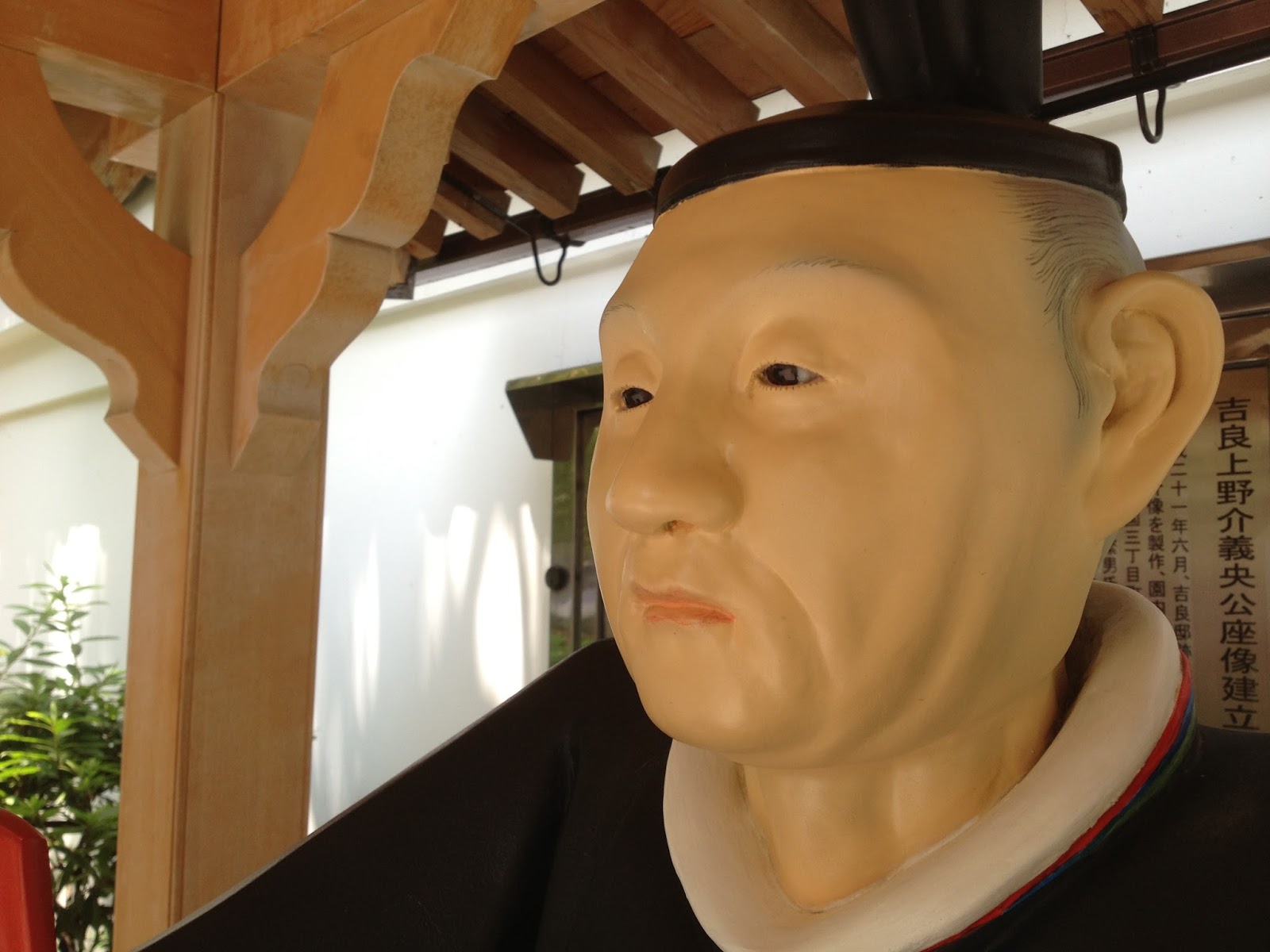 |
| Lord Kira's Head |
They would wash his head in the well and take it to Sengakuji to lay it as an offering at the grave of their dead master.
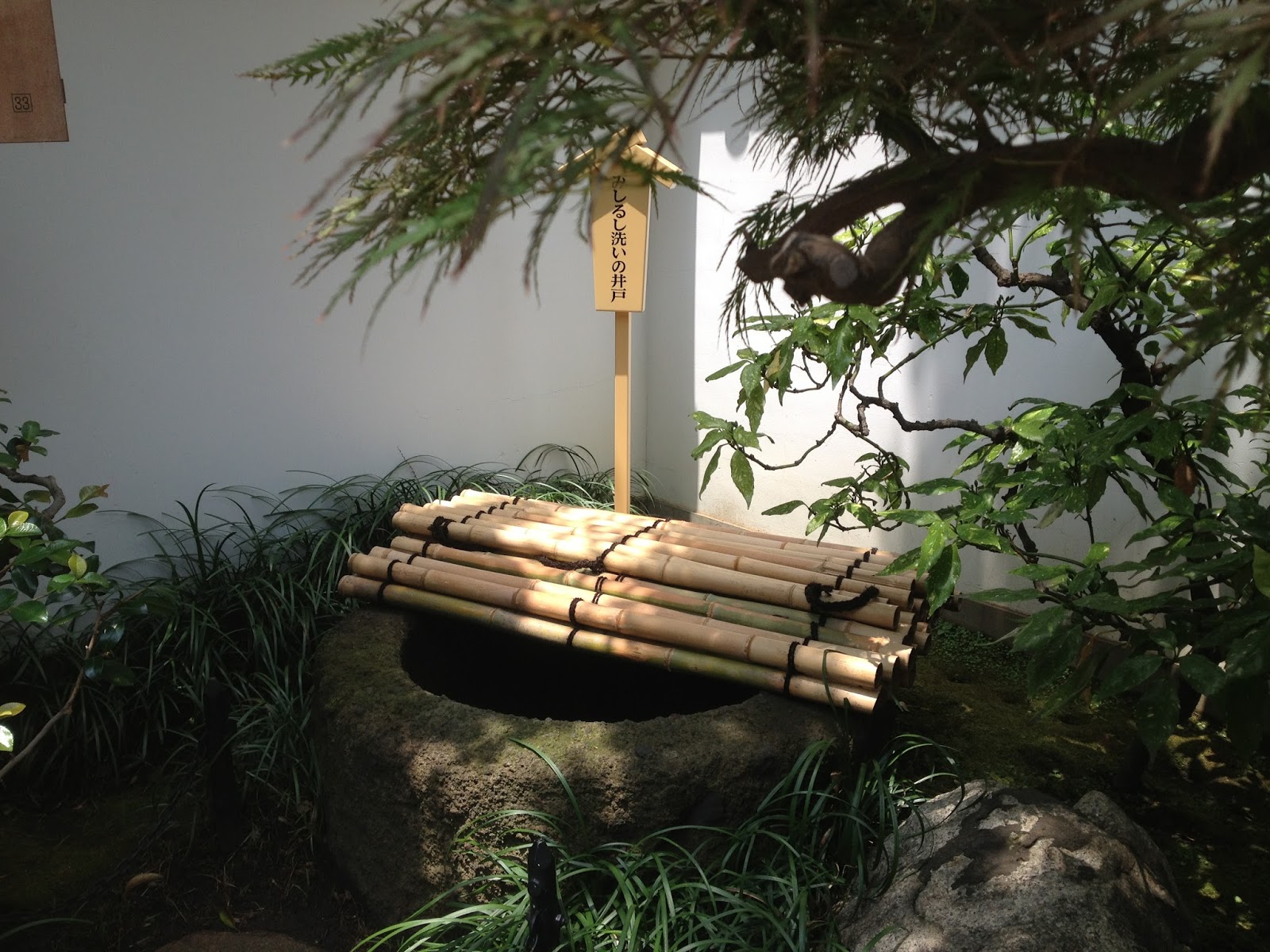 |
| The Well Where the 47 Ronin Washed Kira's Head |
I was quite surprised to see the well where the 47 Ronin washed Kira's head. It bears the inscription,
"This is the well in which the head was washed. You must not wash your hands or feet here."
It has been 310 years since this bloody act, yet I could not help myself, I had to look inside. What did I see?
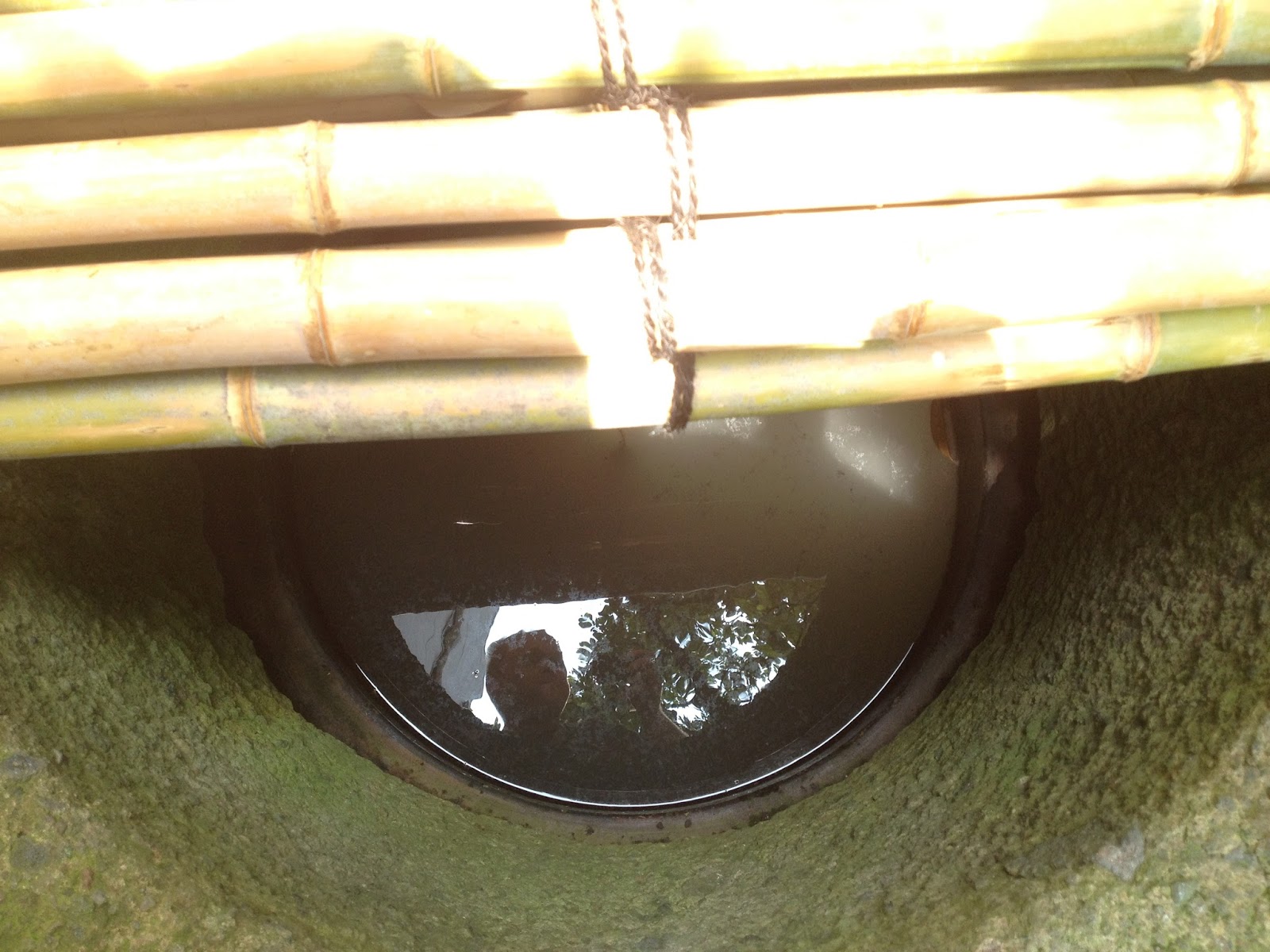 |
| Michael Glenn's Head in Lord Kira's Well |
My own head reflected in the water!
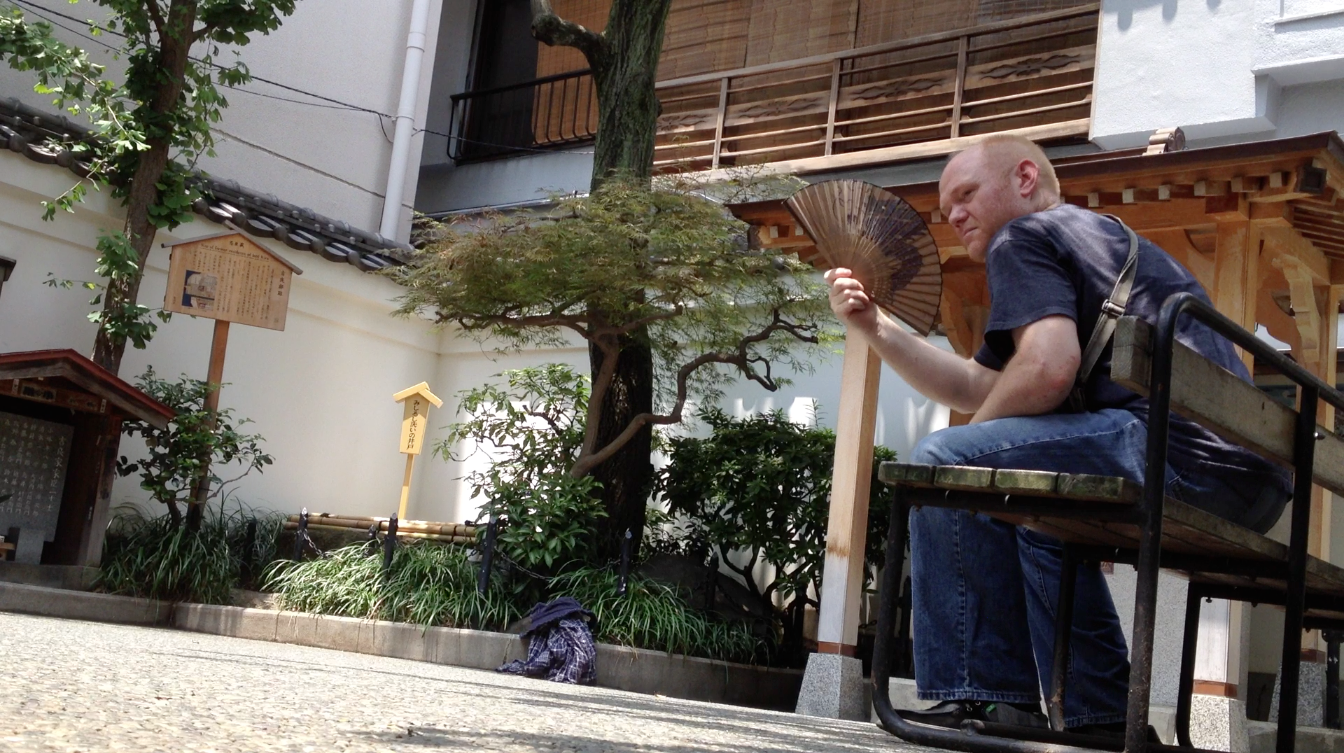 |
| Michael Glenn Fans His Head at Kira's, Ryōgoku |
Thinking about what happened here made my head hot, so I sat to fan myself. The silence in this courtyard was longer than normal. You don't normally think of silence as long, but this was 310 years worth.
It had a strange, but serene heaviness.
After avenging their master, like the most dedicated samurai, the 47 Ronin dropped all disguise, surrendered to the code of Bushido, to await their fate. They were sentenced to perform Seppuku. And they did.
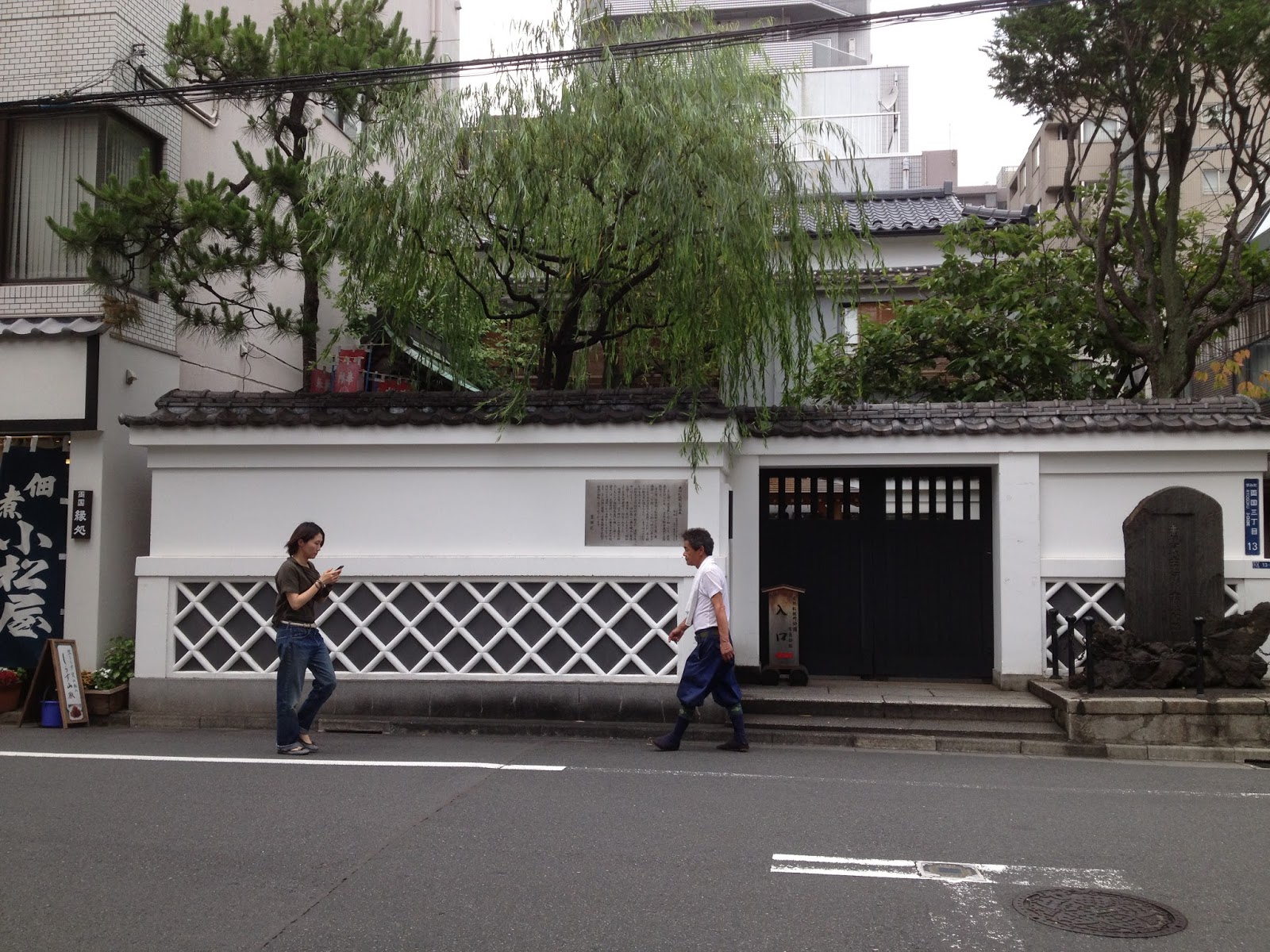 |
| Life goes on, Ryōgoku |
The priests from Sengakuji returned Kira's head to his family. His son gave them a receipt which read,
Memorandum:
Item - one head.
Item - one paper parcel.
The above articles are acknowledged to have been received.
This story of the 47 ronin is a famous tragedy that echoes forth from the annals of Bushido and the isolated culture of Japan to reach out around the world. It has been written about by famous authors and reinterpreted in poetry and art. Like any world class tragedy, it has revenge at it's center, but this revenge was plotted and executed with Ninja like patience and perseverance.
The code of Bushido borrowed a doctrine of revenge from Confucius:
"Thou shalt not live under the same heaven nor tread the same earth with the enemy of thy father or lord"
Kira had to die.
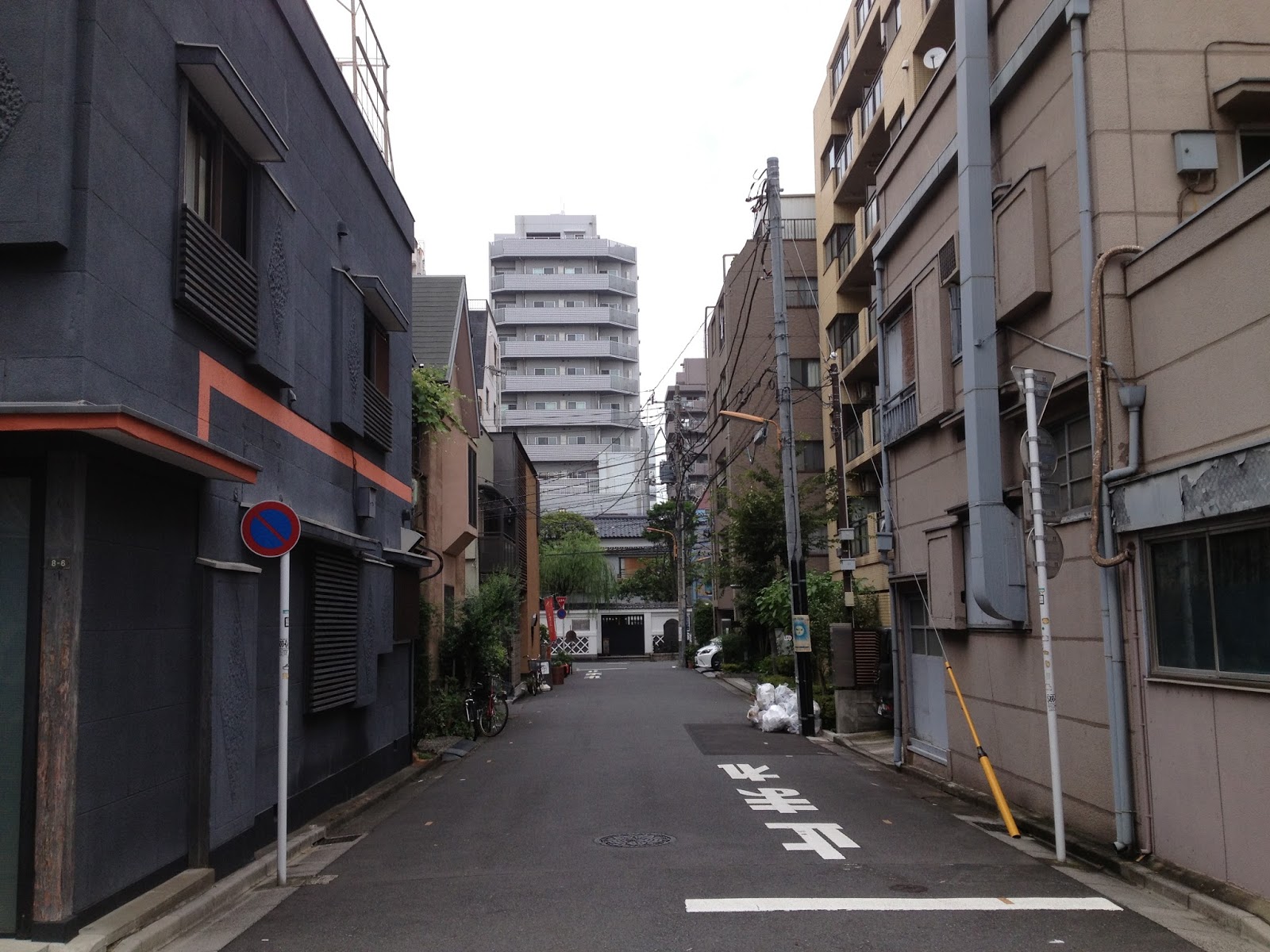 |
| Looking Back at Lord Kira, Ryōgoku |

…
